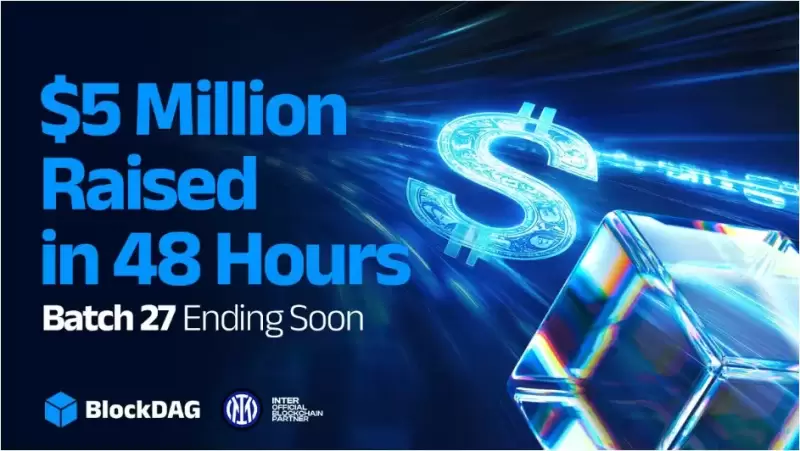虽然许多人将比特币披萨日称为有史以来第一次使用比特币的商业交易,但值得注意的是,从技术上讲,这并不是第一次使用加密货币进行的“支付”。

On May 22, 2010, Laszlo Hanyecz, a programmer from Florida, made history by purchasing two large pizzas with 10,000 BTC, marking the first known commercial transaction using Bitcoin. This event, now celebrated as 'Bitcoin Pizza Day,' played a pivotal role in the cryptocurrency's journey toward mainstream adoption.While this transaction is widely regarded as the first commercial use of Bitcoin, it's essential to note that the initial entry of Bitcoin into the system occurred with the mining of the Genesis Block by Satoshi Nakamoto on January 3, 2009. This block, mined solo by Nakamoto, contained a reward of 50 BTC, setting the stage for the cryptocurrency's entry into the world.As Bitcoin gained traction, several key milestones and developments shaped the landscape of crypto processing. In 2011, BitPay emerged as one of the pioneering companies dedicated to facilitating Bitcoin transactions for merchants. Their core innovation was a system that allowed merchants to accept Bitcoin while simultaneously converting it into fiat currency at a fixed exchange rate.This solution proved invaluable for businesses, shielding them from the price volatility characteristic of Bitcoin at the time. BitPay also integrated with various e-commerce and point-of-sale platforms, enabling both online and brick-and-mortar stores to accept Bitcoin as easily as traditional credit card payments.One of BitPay's early successes was its partnership with WordPress in 2012, enabling the popular blogging platform to accept Bitcoin for its premium services. This marked a significant step toward mainstream acceptance and highlighted Bitcoin's viability for digital content purchases.In 2014, the adoption of cryptocurrency payment processing accelerated significantly. This year saw the launch of CryptoProcessing, operated by CoinsPaid, which supported not only Bitcoin but over twenty digital assets and more than forty fiat currencies.Simultaneously, PayPal made a groundbreaking move by integrating Bitcoin through its subsidiary Braintree. This integration allowed merchants using Braintree to accept Bitcoin payments, signaling a major step toward mainstream acceptance of cryptocurrency. The backing of such a major payment processor demonstrated the growing legitimacy and potential of Bitcoin in everyday transactions.Microsoft also entered the fray in 2014 by starting to accept Bitcoin for digital content. This move by a tech giant further pushed Bitcoin into the mainstream, highlighting its viability as a payment method for digital goods and services.Another significant development was the launch of Coinbase Merchant Services, which provided an easy-to-use interface for businesses to integrate Bitcoin payment options into their existing systems with minimal hassle.One of Coinbase's notable achievements that year was its partnership with Overstock.com. This collaboration allowed Overstock, a major online retailer, to start accepting Bitcoin, setting a precedent for other large companies to follow and paving the way for broader acceptance of cryptocurrency in mainstream commerce.As the years progressed, the interest in cryptocurrencies grew, fueled by technological advancements and increasing public awareness. By 2017, the initial coin offering boom captured global attention. Businesses and startups raised billions of dollars through ICOs, demonstrating the financial potential of blockchain technology.During this period, more companies began to experiment with accepting cryptocurrencies as new, more efficient chains made cryptocurrency transactions a cheaper, quicker alternative to fiat payments. For instance, in 2016, Steam, the popular gaming platform, started accepting Bitcoin for game purchases.The year 2020 marked a turning point. The COVID-19 pandemic accelerated the digital transformation across industries, including finance. Cryptocurrencies saw a surge in adoption as both an investment vehicle and a means of transaction.Major companies like PayPal announced support for cryptocurrencies, allowing users to buy, hold, and sell digital currencies through their platform. This was a significant milestone, as it integrated cryptocurrencies into a mainstream financial service used by millions.In parallel, the concept of decentralized finance (DeFi) gained prominence. DeFi platforms enabled financial services like lending, borrowing, and trading without traditional intermediaries, thanks to smart contracts on the blockchain.This movement not only broadened the use cases for cryptocurrencies but also showcased their potential to disrupt traditional financial systems.Despite these advancements, the crypto processing landscape faced several challenges. Regulatory uncertainty remained a significant hurdle. Governments and regulatory bodies around the world grappled with how to classify and oversee cryptocurrencies, leading to a patchwork of regulations.For businesses, navigating this landscape was complex and risky. Additionally, the inherent volatility of cryptocurrencies posed another challenge, as price fluctuations could impact the stability and predictability needed for routine business transactions.Solutions like stablecoins emerged to mitigate this issue, but the broader volatility of the crypto market continued to affect merchant confidence. Another critical concern was security. In 2020, the KuCoin exchange was hacked, resulting in the theft of over $275 million in various cryptocurrencies. Similarly, in 2022, the Wormhole bridge, which facilitates transfers between different blockchain networks, was exploited for approximately $320 million.As a result, businesses had to invest significantly in cybersecurity
2010 年 5 月 22 日,来自佛罗里达州的程序员 Laszlo Hanyecz 用 10,000 BTC 购买了两个大披萨,创造了历史,这是已知的第一笔使用比特币的商业交易。这一活动现在被称为“比特币披萨日”,在加密货币走向主流采用的过程中发挥了关键作用。虽然这笔交易被广泛认为是比特币的首次商业用途,但值得注意的是,比特币最初进入该系统是在 2009 年 1 月 3 日中本聪 (Satoshi Nakamoto) 开采创世区块 (Genesis Block) 时发生的。这个由中本聪 (Satoshi Nakamoto) 单独开采的区块包含 50 BTC 的奖励,为加密货币进入世界奠定了基础。关键的里程碑和发展塑造了加密货币处理的格局。 2011 年,BitPay 成为致力于为商家提供比特币交易便利的先驱公司之一。他们的核心创新是一个系统,允许商家接受比特币,同时以固定汇率将其转换为法定货币。事实证明,这个解决方案对企业来说是无价的,使他们免受当时比特币价格波动特征的影响。 BitPay 还与各种电子商务和销售点平台集成,使在线和实体商店能够像传统信用卡支付一样轻松地接受比特币。BitPay 的早期成功之一是 2012 年与 WordPress 的合作,使流行的博客平台能够接受比特币作为其优质服务。这标志着向主流接受迈出了重要一步,并凸显了比特币在数字内容购买方面的可行性。2014 年,加密货币支付处理的采用速度显着加快。今年,CoinsPaid 推出了 CryptoProcessing,它不仅支持比特币,还支持二十多种数字资产和四十多种法定货币。与此同时,PayPal 通过其子公司 Braintree 整合了比特币,做出了突破性的举动。这种集成允许使用 Braintree 的商家接受比特币支付,这标志着加密货币向主流接受迈出了重要一步。这样一个主要支付处理商的支持证明了比特币在日常交易中日益增长的合法性和潜力。微软也于 2014 年加入了这场竞争,开始接受比特币作为数字内容。科技巨头的这一举措进一步将比特币推向主流,凸显了其作为数字商品和服务支付方式的可行性。另一个重大发展是 Coinbase Merchant Services 的推出,它为企业集成提供了易于使用的界面将比特币支付选项轻松地融入到他们现有的系统中。 Coinbase 那一年的显着成就之一是与 Overstock.com 的合作。此次合作使大型在线零售商 Overstock 开始接受比特币,为其他大公司效仿树立了先例,并为主流商业更广泛地接受加密货币铺平了道路。 随着时间的推移,人们对加密货币的兴趣与日俱增,技术进步和公众意识的提高。到了2017年,首次代币发行热潮吸引了全球的关注。企业和初创公司通过 ICO 筹集了数十亿美元,展示了区块链技术的财务潜力。在此期间,更多的公司开始尝试接受加密货币,因为新的、更高效的链使加密货币交易成为比法定支付更便宜、更快捷的替代方案。例如,2016年,流行的游戏平台Steam开始接受比特币购买游戏。2020年是一个转折点。 COVID-19 大流行加速了包括金融在内的各行业的数字化转型。加密货币作为投资工具和交易手段的采用率激增。PayPal 等主要公司宣布支持加密货币,允许用户通过其平台购买、持有和出售数字货币。这是一个重要的里程碑,因为它将加密货币整合到了数百万人使用的主流金融服务中。与此同时,去中心化金融(DeFi)的概念得到了重视。借助区块链上的智能合约,DeFi 平台无需传统中介机构即可实现借贷和交易等金融服务。这一运动不仅扩大了加密货币的用例,还展示了它们颠覆传统金融系统的潜力。尽管取得了这些进步,但加密处理领域面临着一些挑战。监管不确定性仍然是一个重大障碍。世界各地的政府和监管机构都在努力解决如何对加密货币进行分类和监管的问题,从而导致了监管的混乱。对于企业来说,应对这一局面既复杂又充满风险。此外,加密货币固有的波动性带来了另一个挑战,因为价格波动可能会影响日常商业交易所需的稳定性和可预测性。稳定币等解决方案的出现是为了缓解这个问题,但加密货币市场更广泛的波动性继续影响商人的信心。另一个关键问题是安全性。 2020 年,KuCoin 交易所遭到黑客攻击,导致超过 2.75 亿美元的各种加密货币被盗。同样,2022 年,促进不同区块链网络之间传输的虫洞桥被利用了约 3.2 亿美元。因此,企业必须在网络安全方面进行大量投资





















































































